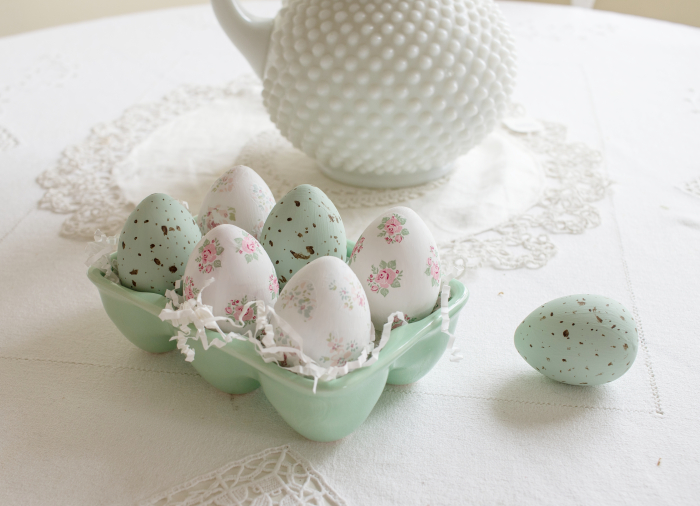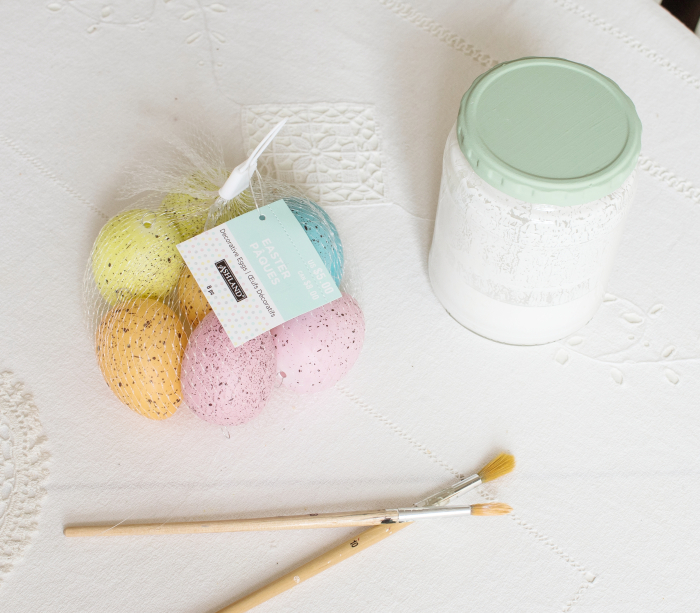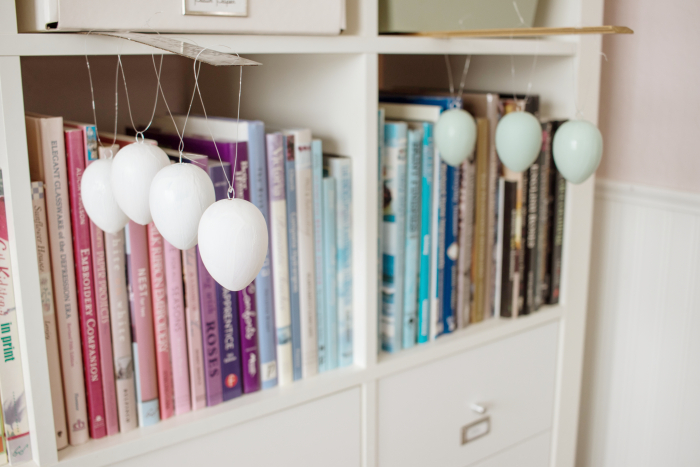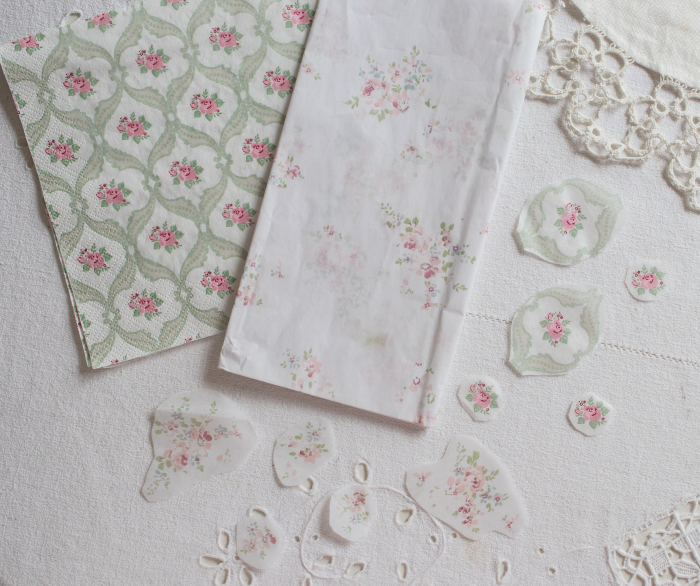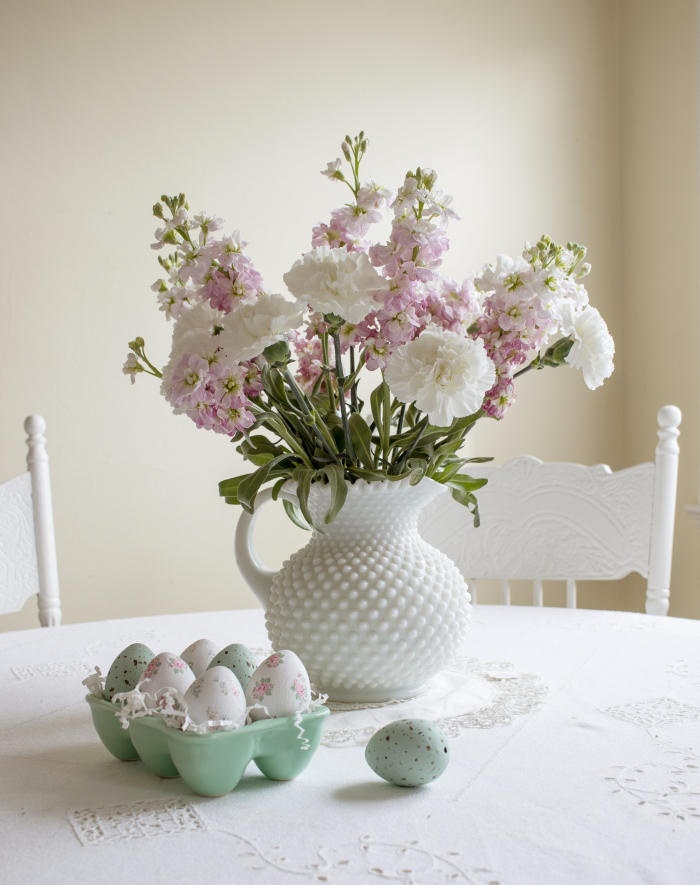This was such an easy, pretty Easter craft project I don't know why I didn't do it sooner.
Truth be told I did run into a little trouble on the onset. I tried the whole raw egg blowing thing and after cracking two eggs into oblivion I knew this wasn't the direction I should go in. So off to my local Michael's I went.
I was hoping to find plain white eggs for decorating or maybe some a pleasing robin's egg blue that I could utilize.
I didn't exactly find those but I found a package of plastic eggs that were the right size and they didn't come apart in two pieces like most Easter eggs. In fact they had the advantage of having a hook and fishing line loop that helped with the second stage of the egg découpage experiment – the painting.
Since the eggs weren't the right color (orange and pink weren't exactly the look I was going for…) I brought out my all purpose white chalk paint and just slapped some on. I needed two coats of the white for the découpage and one coat of white and one coat of DecoArt Sea Glass acrylic paint for the robin's eggs. I admit my robin's eggs speckling could use some work but what I came up with works for me.
I had to rig up a drying rack but the fishing line sure came in handy.
I have seen various tutorials and blog posts on découpaging Easter eggs and so I figured I could just jump right into it. I had some lovely napkins from Ikea (bought ages ago) and some really sweet tissue paper from Target that I've been hoarding. What I learned early on is that the smaller the bits of paper you have to découpage the better. I had lofty ideas of swaths of roses and floral emblems but the smaller pieces smoothed out easier.
I had grand ideas that I would have medallions on two sides of the eggs but it turned out they were too big and just creased and too much smoothing out made them tear. So teeny bits of paper to découpage. Remember that. Half to three quarter of an inch at most.
I made my découpage medium. Three parts Elmer's white glue to one part water. That is it. Waaaaay cheaper than buying the popular brand of découpage glue.
Through trial and error I found they best method was to paint the découpage mixture on the egg then place the bit of tissue or napkin and then smooth out with your finger which has been moistened with some the découpage mixture. Just keep smoothing out those wrinkles.
This turned out to be an inexpensive and quick project. And very sweet if I do say so myself.
Whether you use real eggs or faux – the result is the same. The advantage of using faux eggs is that you can keep them from year to year. Happy Easter everyone!
